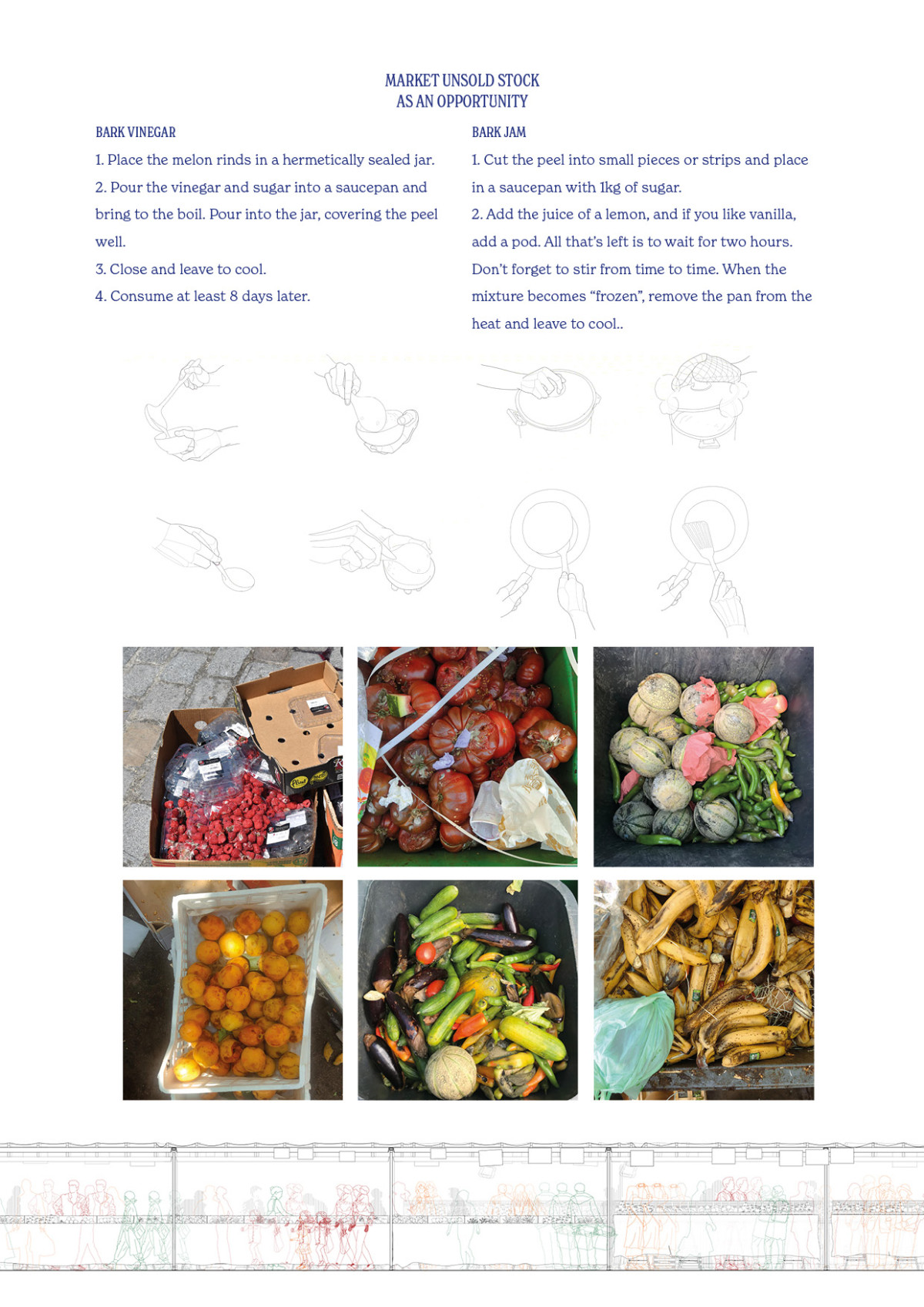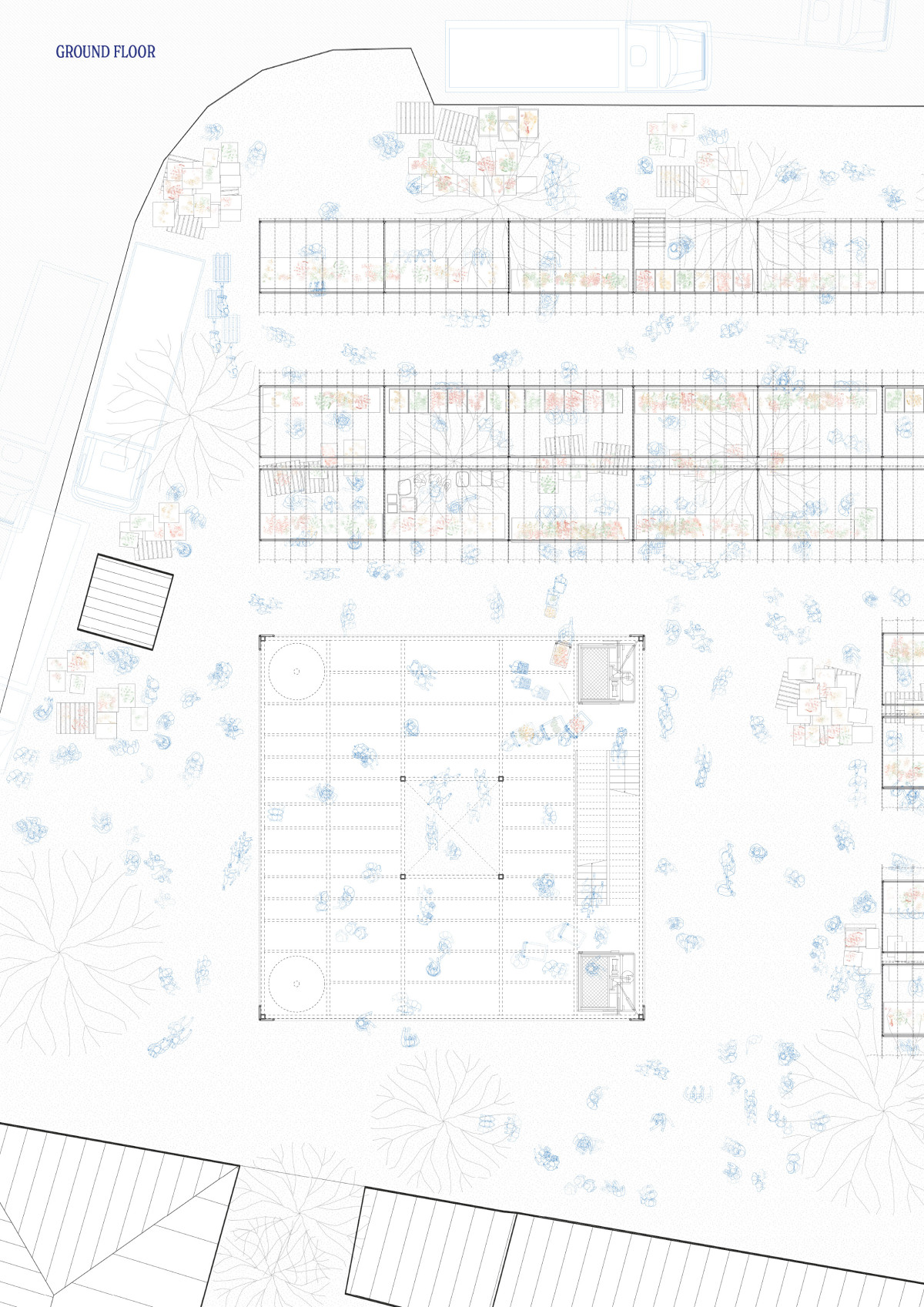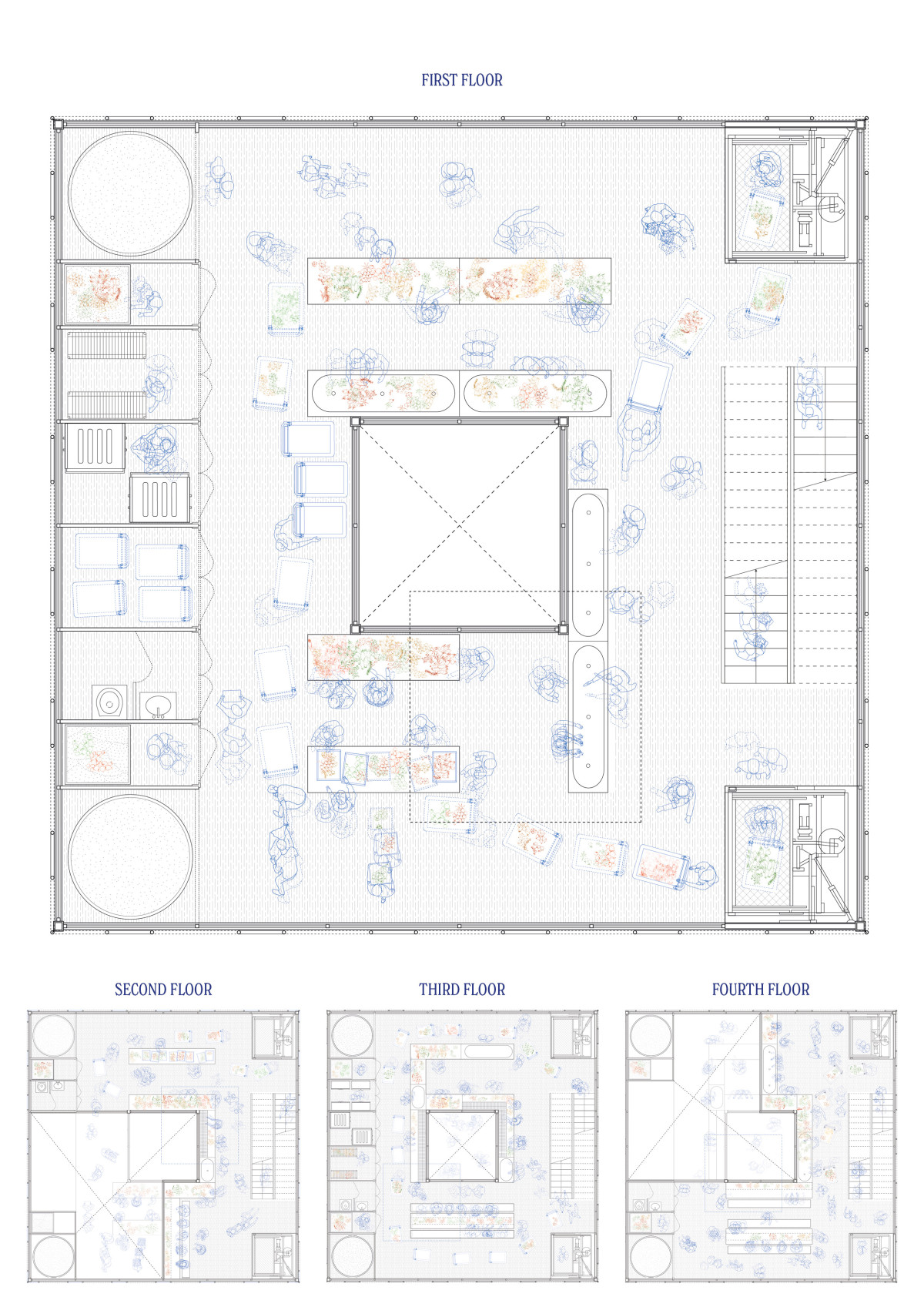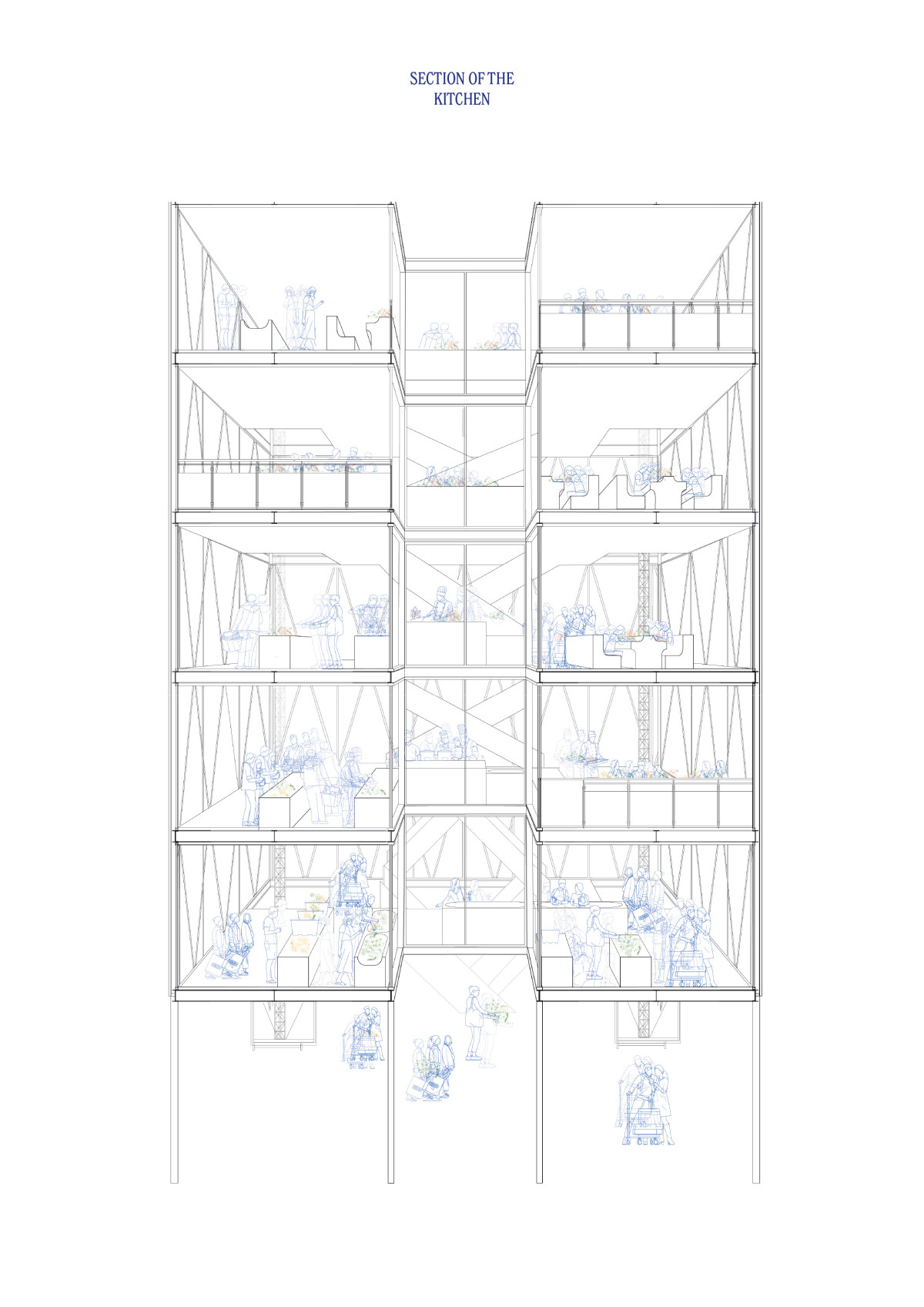Le projet
Every summer morning, at dawn, my brother and I would go through the ritual of carefully removing the skins from the juice peaches, which our mother would brown in sugar and a knob of butter. On our favourite July treats, she would sometimes pour the leftover verbena infused the previous evening. When we were older, we used the leftovers from our beers to make a doughnut dough that we mixed with a few flowers from the garden. My favourites were the lilac flower fritters in April. All year round, from orange, clementine and lemon peel for rice pudding to pasta cooking water for thickening sauces, we cooked with rubbish, detritus, surplus and waste, which fed us hungrily for several more meals. The pleasure of eating was superimposed on the pleasure of the table, where everyone came to discover the value of things they didn’t know they had.
The aim of this work is to reverse the relationship between cooking and waste, and to think of architecture as a way of «sublimating the repulsive». Based on the observation that a third of food in the market place is neither sold nor eaten, and is even thrown away, the architecture is grafted onto the markets, the first places to influence the political organisation of cities. This project is a way of recovering unsold food, rubbish and surplus on the spot, and turning it into an experiment in collective awareness through the shared practice of cooking.
Like the structure of the market, which folds and unfolds, the architecture of the kitchen shrinks, grows and adapts according to the amount of waste recovered, creating a scenographic and educational dimension to the act of cooking with waste. It’s a system that unfolds in the city in a totemic way. Like a newsagent or a fountain, our architecture tends to become a visual and identifiable element in the city. The market is no longer an ephemeral space; the grafting of the kitchen redefines the temporality of the market. Our kitchen is a set of levels that perform several functions: sorting, cleaning, cooking, eating and washing. The plan is built around a system, which is put in place by a need for highly predictable equipment (storage, sorting, cleaning, cooling, etc.). The access, goods lifts, storage areas, water container and compost areas are positioned on the façade, in a double skin, to showcase the resources from the street.
Inside, the layout features three elements: the tank, the fireplace and the table, which are arranged around a skylight that provides ventilation. The structure frees the entire floor plan from walls, creating programmatic freedom and fluidity of use. The change in size of the standard kitchen furniture becomes a tool for rediscovering the pleasure of cooking, giving them a monumental dimension.
This permanent architecture, which can be adjusted according to the amount of unsold food collected, is a way of showcasing food waste while (re)discovering the pleasure of cooking in a kitchen.
Biographie
Lauren Marchand et Clémence Lorta sont toutes deux diplômées de l’ENSA Paris-Malaquais. Passionnée par l’architecture patrimoniale et la rénovation, Clémence travaille actuellement comme cheffe de projet dans une agence alliant architecture et ingénierie environnementale. Passionnée par l’artisanat, Lauren est designer pour Dorothée Meilichzon, où elle conçoit des décors et du mobilier sur mesure pour des restaurants et des boutiques. Elle participe également à la direction artistique de la biennale Amour Vivant.








